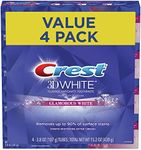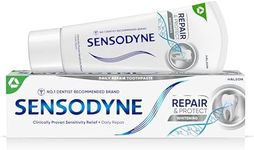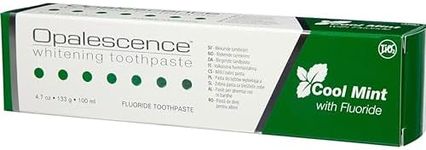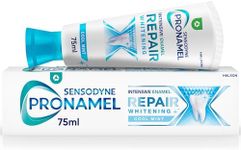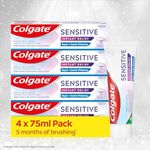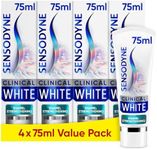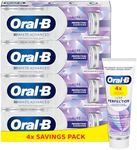Buying Guide for the Best Teeth Whitening Toothpastes
Choosing the right teeth-whitening toothpaste can be a game-changer for your oral hygiene routine and your confidence. The goal is to find a product that effectively removes stains and brightens your smile without causing damage to your teeth or gums. When selecting a teeth-whitening toothpaste, it's important to consider the ingredients, the level of abrasiveness, and any additional benefits the toothpaste might offer. Understanding these key specifications will help you make an informed decision that aligns with your dental needs and lifestyle.Whitening IngredientsWhitening ingredients are the active components in toothpaste that help remove stains and whiten teeth. Common ingredients include hydrogen peroxide, carbamide peroxide, and baking soda. Hydrogen peroxide and carbamide peroxide are effective for breaking down stains and are often found in professional whitening treatments. Baking soda is a milder option that gently polishes the teeth. If you have sensitive teeth, you might want to opt for a toothpaste with a lower concentration of peroxide or one that uses baking soda. Consider your sensitivity level and desired whitening effect when choosing the right ingredient for you.
AbrasivenessAbrasiveness in toothpaste is measured by the Relative Dentin Abrasivity (RDA) scale, which indicates how much the toothpaste can physically scrub away stains. A higher RDA value means more abrasiveness, which can be effective for removing surface stains but may also wear down enamel over time. Toothpastes with an RDA value below 70 are considered low-abrasive and are suitable for daily use, especially for those with sensitive teeth. If you have strong enamel and are looking for more intensive stain removal, a toothpaste with a higher RDA might be appropriate. Always balance the need for stain removal with the health of your enamel.
Fluoride ContentFluoride is a mineral that helps strengthen tooth enamel and prevent cavities. Most whitening toothpastes contain fluoride, but the concentration can vary. A standard fluoride toothpaste typically contains around 1000 to 1500 ppm (parts per million) of fluoride. If you are prone to cavities or have been advised by your dentist to use fluoride, ensure your whitening toothpaste contains an adequate amount. For those who prefer fluoride-free options due to personal preference or health reasons, there are alternatives available, but they may not offer the same level of cavity protection.
Sensitivity ProtectionSensitivity protection in toothpaste is important for individuals who experience discomfort when consuming hot, cold, or sweet foods and drinks. Some whitening toothpastes include ingredients like potassium nitrate or stannous fluoride, which help to reduce sensitivity by blocking the pathways to the nerves in the teeth. If you have sensitive teeth, look for a toothpaste that specifically mentions sensitivity protection. This will allow you to enjoy the benefits of teeth whitening without exacerbating any discomfort.
Flavor and TextureFlavor and texture are personal preferences that can affect your overall experience with a toothpaste. Whitening toothpastes come in a variety of flavors, such as mint, cinnamon, or even fruit flavors. The texture can range from smooth gels to gritty pastes. If you prefer a refreshing taste that leaves your mouth feeling clean, a mint-flavored toothpaste might be ideal. For those who dislike strong flavors, a milder option might be more suitable. Consider what flavors and textures you enjoy to ensure you stick to your oral hygiene routine.


